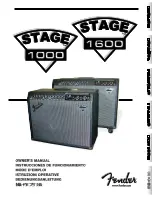
29
MEM
10. Transferring and Saving Capture Memory Data to a Sequencer
CAPTURE MEMORY refers to all of the piston registrations on all available memories,
piston configuration settings, plus all MIDI settings as well as MIDI program changes.
With this operation, the organist can copy and save all of this stored information to a
digital MIDI sequencer.
Advance to the 'CAPTURE MEMORY SAVE' window function
(see Section A-2)
.
Set your sequencer to the record mode
and begin recording as you normally
would. Press and hold the
MEMORY
button in the Console Controller
.
While holding
MEMORY
, press
General Pistons 2-5-5 in sequence. The Capture Memory information will be transmitted
to the sequencer. During the memory data transfer process the window will display:
The 'dot' behind the word 'SENDING' on line one of the display will move as data is
transmitted.
Note:
This procedure can take an extended period of time, so please be patient. Once
completed, a copy of the Capture Memory information will exist in the sequencer and the
original information will be retained in the Console Controller™ memory.
11. Return Capture Memory Data from a Sequencer to the Organ
To replace previously recorded Capture Memory information into the organ from your
sequencer, simply press "Play" on the sequencer and the recorded capture data will
automatically be transmitted to the organ. You must have a MIDI cable connected from
the OUT port of the sequencer to the IN port of the Allen Organ. It does not matter what
window function the Console Controller displays.
Note:
The Capture Memories must be unlocked
(see section A-6)
before you press
“Play” on the sequencer, allowing the organ’s available memories to receive capture
information. It is a good idea to first save whatever is stored in the organ’s memory
because it will be erased by this procedure.
Note:
The 'dot' on line two of the display will move as data is received.
CAPTURE MEMORY
SAVE
RECEIVING DATA
..
sending.
piston config
sending.
capture memory
sending.
user program chg







































